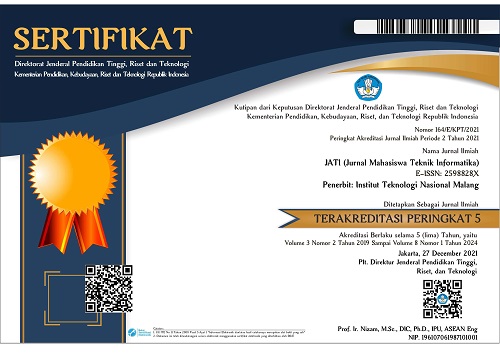DETERMINING RECIPIENTS OF SOCIAL ASSISTANCE FOR STUDENTS AFFECTED BY COVID-19 USING THE K-NEAREST NEIGHBOR (KNN) METHOD
Abstract
School is an institution or institution where learning and teaching and a place to receive and give lessons. Along with the development of communication and information technology, and the rapid spread of the Covid-19 outbreak in Indonesia, learning is carried out online / long distance. However, the government policy in implementing the Distance Learning (PJJ) system many parents objected to having to meet their needs during online learning. The provision of social assistance from the school for students affected by Covid-19 still uses a manual system, which is selecting student files one by one, then assessing which student files are eligible for social assistance. The problem that arises from this selection process is that there are too many student files and the school takes too long to make decisions if there are similarities in student data.
These problems are the background of making a web-based BANSOS covid-19 application system that applies the K-Nearest Neighbor method which will make it easier for schools to classify new student data, whether or not they are affected by covid-19, so that schools can provide assistance or not quickly and accurately.
Based on the results of system functional testing, this system can run well on 2 browsers, namely Google Chrome and Mozilla Firefox. testing the calculation of the K-Nearest Neighbor algorithm with a parameter value of K = 5 using confusion matrix, the accuracy value is 98%, the precision value is 100%, and the recall value is 96%.












